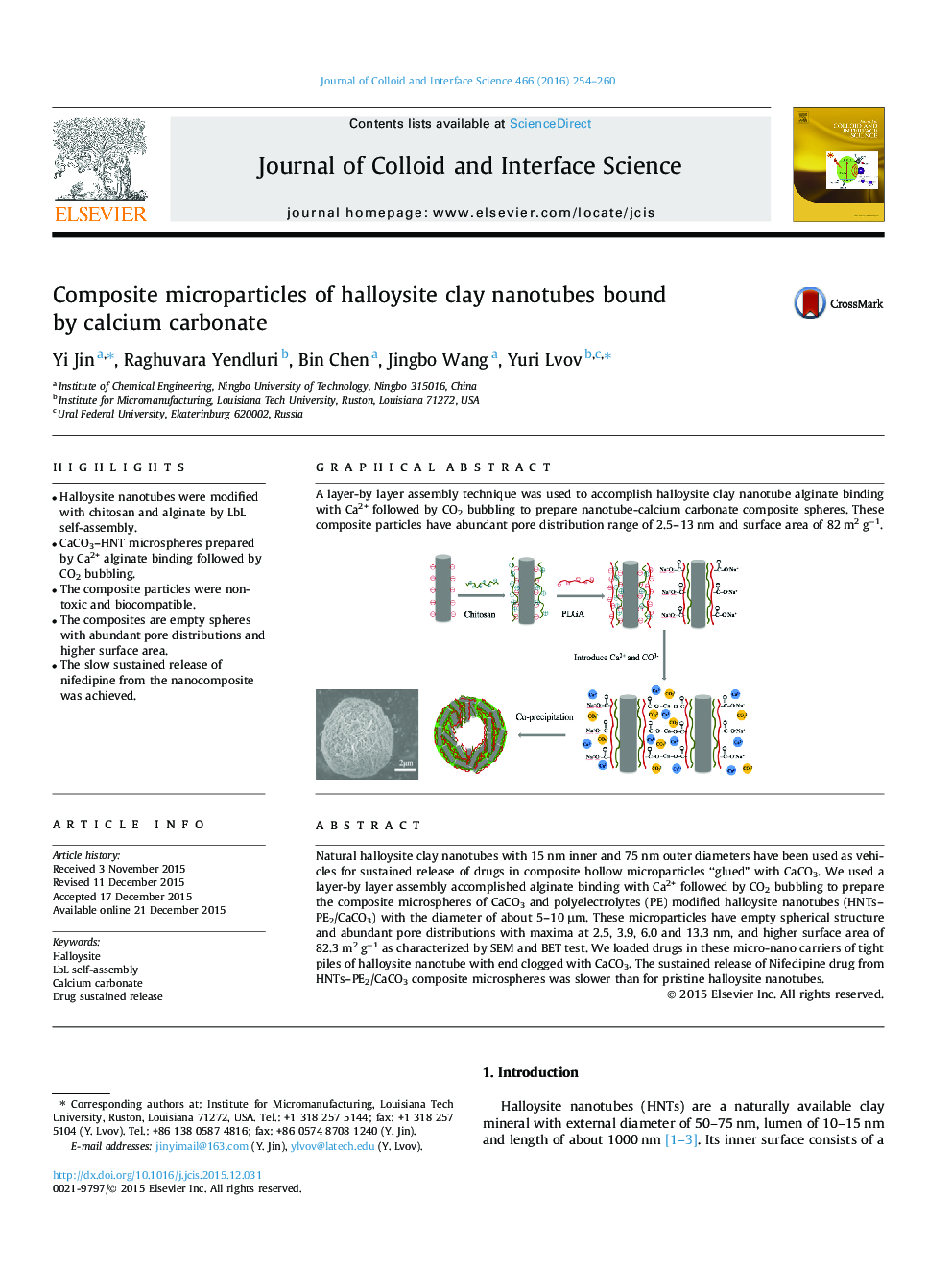| Article ID | Journal | Published Year | Pages | File Type |
|---|---|---|---|---|
| 606345 | Journal of Colloid and Interface Science | 2016 | 7 Pages |
•Halloysite nanotubes were modified with chitosan and alginate by LbL self-assembly.•CaCO3–HNT microspheres prepared by Ca2+ alginate binding followed by CO2 bubbling.•The composite particles were non-toxic and biocompatible.•The composites are empty spheres with abundant pore distributions and higher surface area.•The slow sustained release of nifedipine from the nanocomposite was achieved.
Natural halloysite clay nanotubes with 15 nm inner and 75 nm outer diameters have been used as vehicles for sustained release of drugs in composite hollow microparticles “glued” with CaCO3. We used a layer-by layer assembly accomplished alginate binding with Ca2+ followed by CO2 bubbling to prepare the composite microspheres of CaCO3 and polyelectrolytes (PE) modified halloysite nanotubes (HNTs–PE2/CaCO3) with the diameter of about 5–10 μm. These microparticles have empty spherical structure and abundant pore distributions with maxima at 2.5, 3.9, 6.0 and 13.3 nm, and higher surface area of 82.3 m2 g−1 as characterized by SEM and BET test. We loaded drugs in these micro-nano carriers of tight piles of halloysite nanotube with end clogged with CaCO3. The sustained release of Nifedipine drug from HNTs–PE2/CaCO3 composite microspheres was slower than for pristine halloysite nanotubes.
Graphical abstractA layer-by layer assembly technique was used to accomplish halloysite clay nanotube alginate binding with Ca2+ followed by CO2 bubbling to prepare nanotube-calcium carbonate composite spheres. These composite particles have abundant pore distribution range of 2.5–13 nm and surface area of 82 m2 g−1.Figure optionsDownload full-size imageDownload high-quality image (157 K)Download as PowerPoint slide
